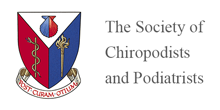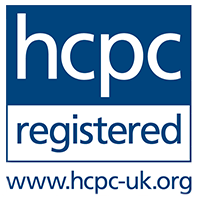Winter Feet
Winter time is hard on your feet. Everything feels more tender, your bones ache, and your feet seem much further away than they are in the Summer.
In Winter we may bring out shoes and boots we haven’t worn for a while. Check the insoles and the insides of the uppers for worn areas that could irritate you. Go for a short walk in the rain (we usually have some of that available) to make sure they aren’t letting in water.Your shoes should ideally have a thick sole or an inlay, to help keep you warm, and you should wear socks – you keep you warm and protect you from rubbing on your shoes.Dont let your nails get too long or sharp, and use your favourite foot cream daily to keep your skin in good condition.
IN 2020 / 2021 we have the added threat of Covid toe. This is a condition similar to chilblains. It can occur in young people with no other symptoms, and although it usually responds to the chilblain treatment described below, it can occasionally be very serious. So if toes are becoming very painful, dark in colour and/ or skin seems to be breaking down, seek a medical opinion as soon as possible.
What are Chilblains?
Chilblains affect the toes but can also affect the fingers, ears and nose. They appear on the skin as small, itchy swellings which occur as a reaction to cold temperatures.
They can be uncomfortable rarely cause any permanent damage. They will normally heal within a couple of weeks if further exposure to the cold is avoided.
What causes it?
The majority of sufferers develop Chilblains in the winter due to the low temperatures. They are especially common in the UK because damp and cold weather is the norm during the winter months
The low temperatures cause a restriction of a small branch of artery leading to the capillaries which supply blood to the skin. When the skin is warmed quickly this can lead to blistering, redness and itchy lesions.
If you have poor circulation or if you work in an environment where you are regularly exposed to cold and damp conditions you may be more likely to develop Chilblains.
What will happen if I leave it?
Chilblains usually don’t require any treatment as the symptoms often get better on their own after a week or two.
Occasionally Chilblains can reoccur or become severe which puts you at risk of developing further problems. There is a small chance that an infection can develop from the blistered or scratched skin which can then lead to permanent scarring. In the most severe cases, ulcers may develop on the skin which can cause pain when moving.
To avoid complications such as these it is advisable not to directly overheat the area and to try to refrain from itching or scratching the skin.
What can help?
If you do suffer from Chilblains you can reduce your risk of developing them by limiting your exposure to cold environments. If your feet do get cold, it is important to warm them up gradually as heating them too quickly is one of the main causes of Chilblains. Taking care of your feet by regularly moisturising them to stop the skin splitting is a great prevention tool. Warming your shoes on the radiator before you put them on and keeping your feet dry are also key to the prevention of Chilblains. Keeping your feet active in cold weather is also recommended.
What are the treatment options?
If the skin is itchy, a soothing lotion such as witch hazel or calamine can help. A specific chilblain cream, like Balmosa may also be useful. Most importantly, keeping the toes warm and dry as much as possible. Occasionally the skin can break. If it does, apply a dressing to keep infection at bay. A combination of a healthy diet and regular exercise have also been proven to reduce the occurrence of Chilblains.
If you think you may have an infection it is important to seek treatment as soon as possible. Your Podiatrist will be able to apply dressings and recommend antibiotics if required.




